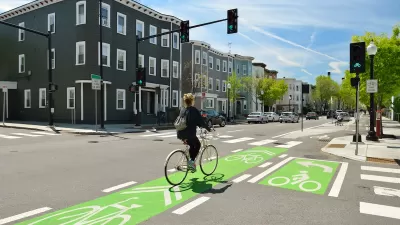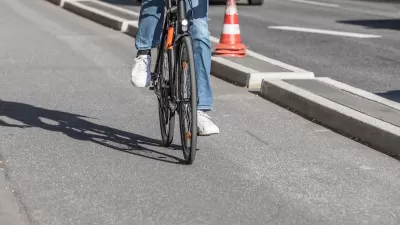After the death of a well-known Indianapolis cyclist and growing pedestrian death rates, the city expanded on its 2012 Complete Streets ordinance to highlight equity and renew efforts to make streets safer.

An article by Kayla Dwyer in the Indianapolis Star highlights the Indianapolis City Council’s renewed efforts to implement a Complete Streets policy. Originally passed in 2012, the city’s Complete Streets ordinance “drifted to the background.” Now, with pedestrian death rates rising and the death of a prominent local cyclist, the city council has issued updates to the policy. “The revised ordinance, adopted by the council Monday night, gets far more specific, and includes an expanded emphasis on transparency and equity.”
The legislation calls for applying Complete Streets principles to all types of projects and adds new performance metrics and reporting requirements. “[City-County Councilor John Barth] said the intention behind this revised policy is to compel the department to report publicly any instances of Complete Streets elements not being implemented after the design process is complete. The revision also requires DPW to identify barriers to Complete Streets implementation and potential solutions.” The ordinance also establishes a formal process for evaluating dangerous intersections and assessing potential safety improvements.
Department of Public Works director Dan Parker says DPW supports the updates, but cautions that the department needs more sustainable funding sources to achieve its goals.
FULL STORY: Complete Streets' 2.0: Eyeing safety, Indianapolis revises 10-year-old road design policy

Alabama: Trump Terminates Settlements for Black Communities Harmed By Raw Sewage
Trump deemed the landmark civil rights agreement “illegal DEI and environmental justice policy.”

Planetizen Federal Action Tracker
A weekly monitor of how Trump’s orders and actions are impacting planners and planning in America.

The 120 Year Old Tiny Home Villages That Sheltered San Francisco’s Earthquake Refugees
More than a century ago, San Francisco mobilized to house thousands of residents displaced by the 1906 earthquake. Could their strategy offer a model for the present?

In Both Crashes and Crime, Public Transportation is Far Safer than Driving
Contrary to popular assumptions, public transportation has far lower crash and crime rates than automobile travel. For safer communities, improve and encourage transit travel.

Report: Zoning Reforms Should Complement Nashville’s Ambitious Transit Plan
Without reform, restrictive zoning codes will limit the impact of the city’s planned transit expansion and could exclude some of the residents who depend on transit the most.

Judge Orders Release of Frozen IRA, IIJA Funding
The decision is a victory for environmental groups who charged that freezing funds for critical infrastructure and disaster response programs caused “real and irreparable harm” to communities.
Urban Design for Planners 1: Software Tools
This six-course series explores essential urban design concepts using open source software and equips planners with the tools they need to participate fully in the urban design process.
Planning for Universal Design
Learn the tools for implementing Universal Design in planning regulations.
Clanton & Associates, Inc.
Jessamine County Fiscal Court
Institute for Housing and Urban Development Studies (IHS)
City of Grandview
Harvard GSD Executive Education
Toledo-Lucas County Plan Commissions
Salt Lake City
NYU Wagner Graduate School of Public Service





























